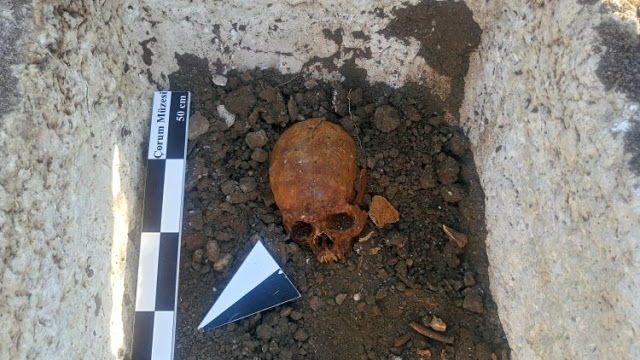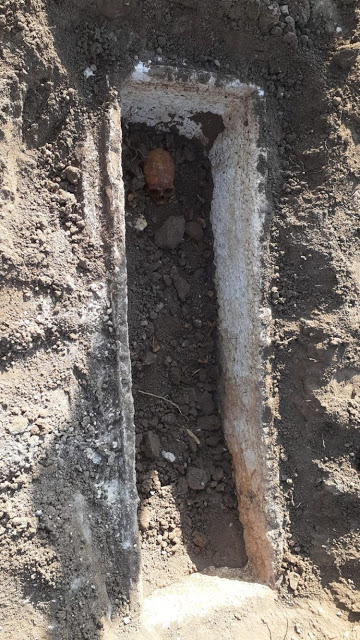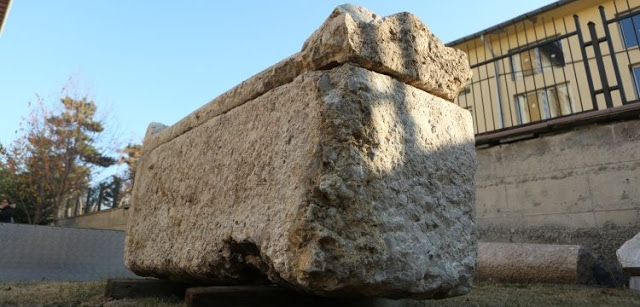Roman-Era Sarcophagus With Skeleton Found In Turkey
During road construction work in central Turkey a 2000-year-old sarcophagus containing a woman’s skeleton was discovered by a provincial official.

The sarcophagus placed some 70.0 centimeters deeper from the ground, was discovered by municipal workers in the central Anatolian province of Çorum, and informed the Çorum Museum about the find.
Together with the police, museum experts toured the scene and after a recovery search, the sarcophagus was moved to the museum.

The sarcophagus also included pieces of glass and a perfume bottle made of terracotta, along with the skeleton, which was sent to the Anthropology Department of Hitit University in Çorum for examination.
Sümeyra Şengül, the provincial head of the Culture and Tourism Office, told reporters that the 2.72-meter long sarcophagus belongs to the Roman era.

“When we opened the cover of the sarcophagus, we saw a female skeleton. It is estimated that it belonged to an old woman,” Sengul said, adding that there were also pieces of glass and a scent bottle.
“These remind us of burial gifts of the Roman era,” she said. Such a sarcophagus is rare in the region as it is made of local materials and possibly was made by “local stone masters,” she noted.
Stating that they earlier came across a soil grave in the region, Şengül added: “All these make us think that the region should be examined thoroughly, and we might come across some irregular burials from the Roman period.”
The Museum Directorate initiated efforts with the Culture and Tourism Ministry to preserve and examine the region in detail as a protected area.





